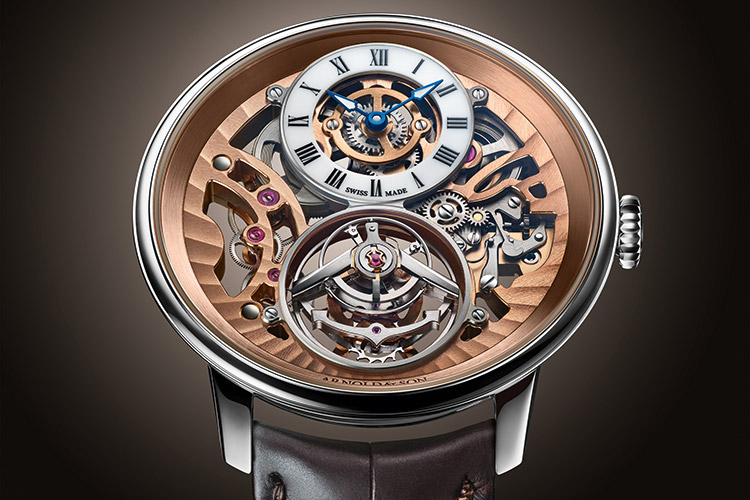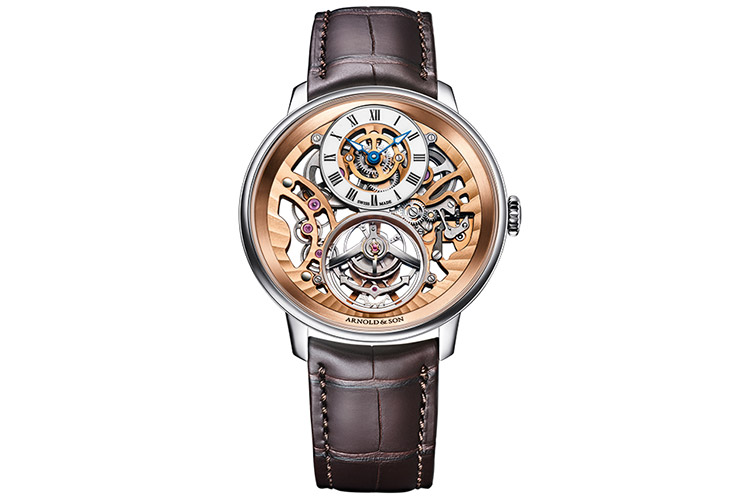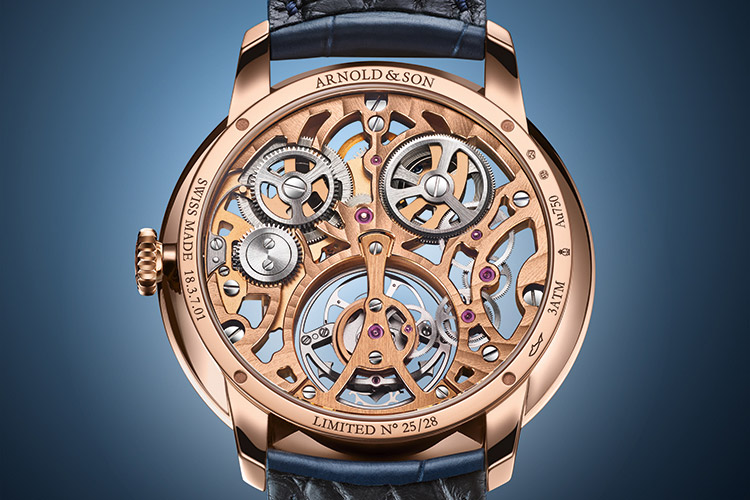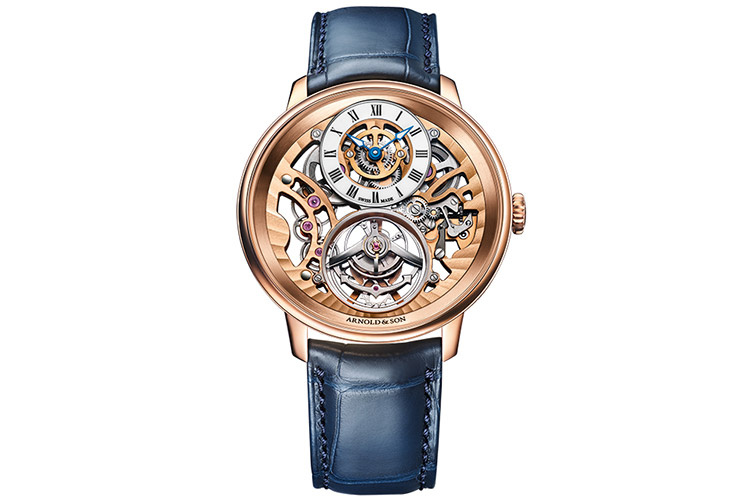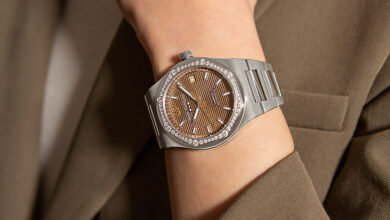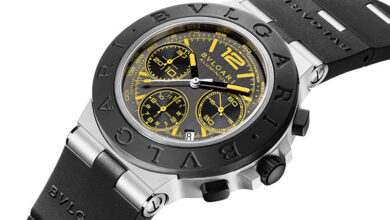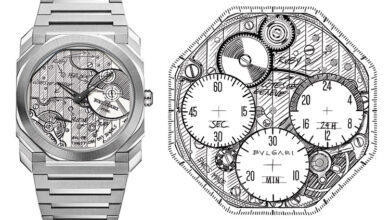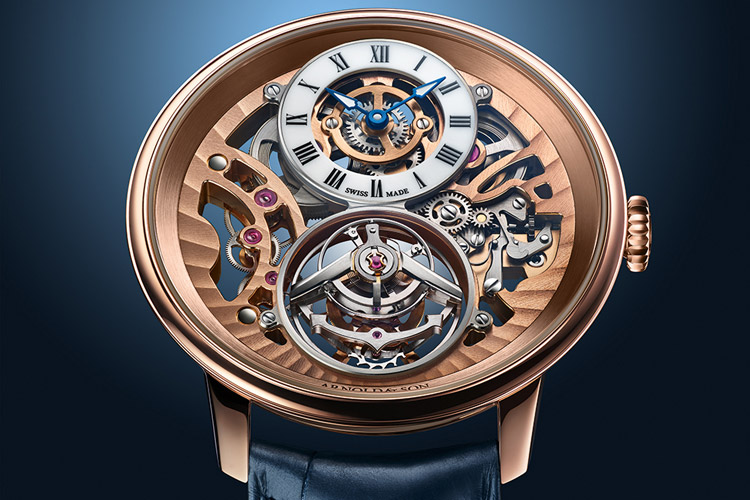
Arnold & Son continues its tour of the Ultrathin Tourbillon collection with two new editions – one in Red Gold and another in Platinum. With its graceful curves and wide apertures, Ultrathin Tourbillon Skeleton also stands out for its slimness. The Ultrathin Tourbillon Skeleton collection, adorned in red gold or platinum, is issued in two limited series featuring 28 watches apiece
Its new case, with a diameter of 41.5 mm and a thickness of 8.4 mm, presents the flying tourbillon calibre in its purest expression. The A&S8320 calibre unveils its curves, apertures, and details within a 41.5 mm case in either red gold (5N) or platinum (PT 950), each released in a run of 28 timepieces. Encased in this precious housing, Arnold & Son’s flying tourbillon stands out for its finesse and precision.
Finesse, because at just 3.3 mm thick, it is one of the slimmest skeleton tourbillon calibres in existence. Precision, because this one-minute flying tourbillon is assembled with a variable-inertia balance for enhanced calibration stability.
The purpose of a skeleton is to convey a message, be it geometric, generic, or minimal. For Ultrathin Tourbillon Skeleton, the skeletonisation of the calibre reveals pronounced curves and numerous inflection points that are highlighted by an original finish. On both the Ultrathin Tourbillon Skeleton Red Gold and Platinum, the bridges are treated with rose-gold PVD (4N) after being decorated with radiating Côtes de Genève stripes. The flange around the calibre adopts this same finish, clearly revealing the Arnold & Son signature at 6 o’clock and enabling the off-centred white opal dial to be displayed in its purest form.
At the heart of Ultrathin Tourbillon Skeleton beats the A&S8320 calibre, whose architecture and slimness are its principal protagonists. Designed without an upper bridge to minimise its thickness, the calibre is classed as a flying tourbillon. The variable-inertia balance with inertia blocks ensures more precise calibration over time. The slender triangular carriage is supported by a double arrow, which is actually a counterpoise. The arrowhead on the staff of the escape wheel serves as a seconds pointer, as the carriage completes one rotation per minute.
The changes to the tourbillon carriage and regulating organ give the A&S8320 calibre a power reserve of 100 hours. While this is a larger power reserve than for standard tourbillons, particularly slim ones, it is entirely in line with the performance regularly achieved by Arnold & Son calibres.

